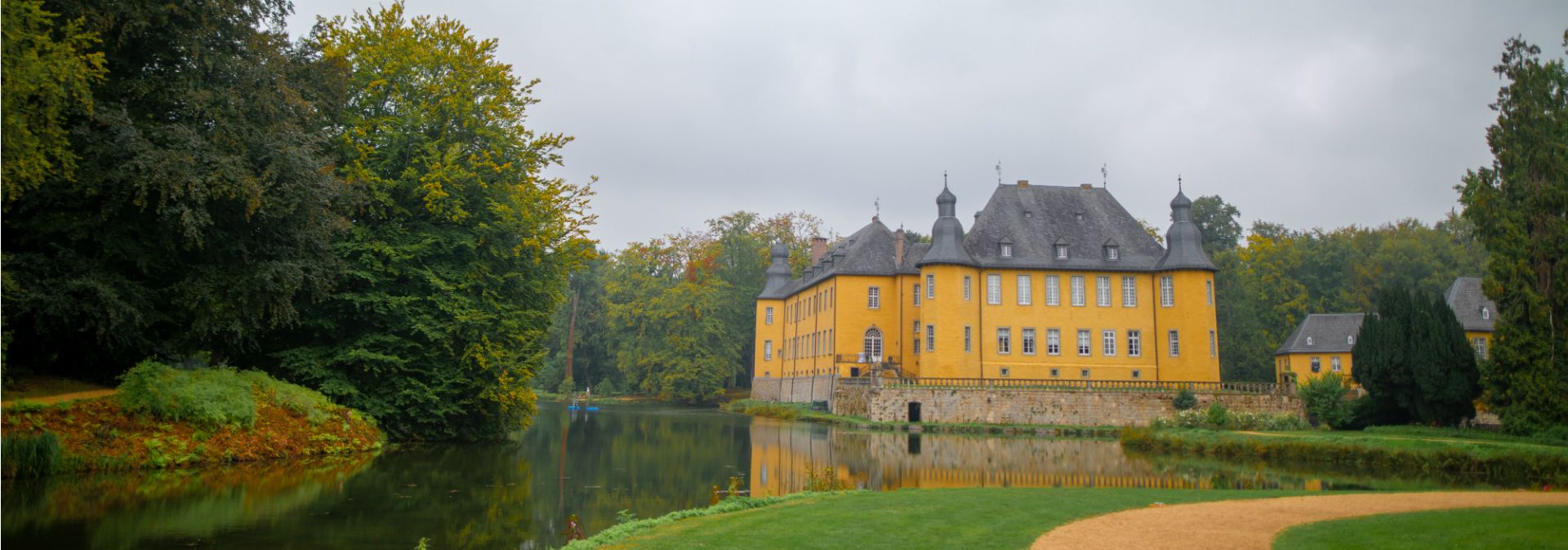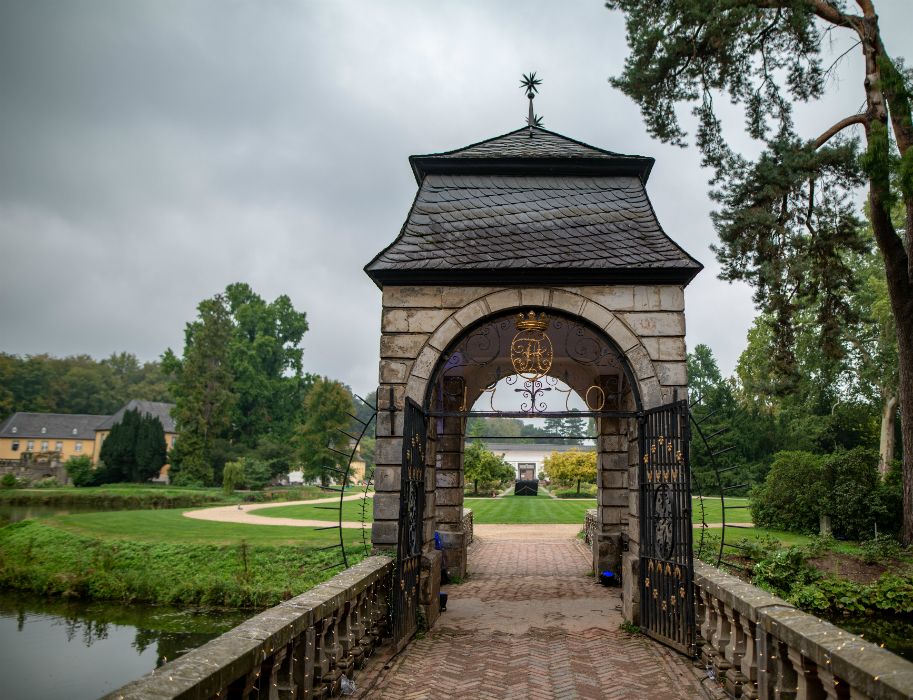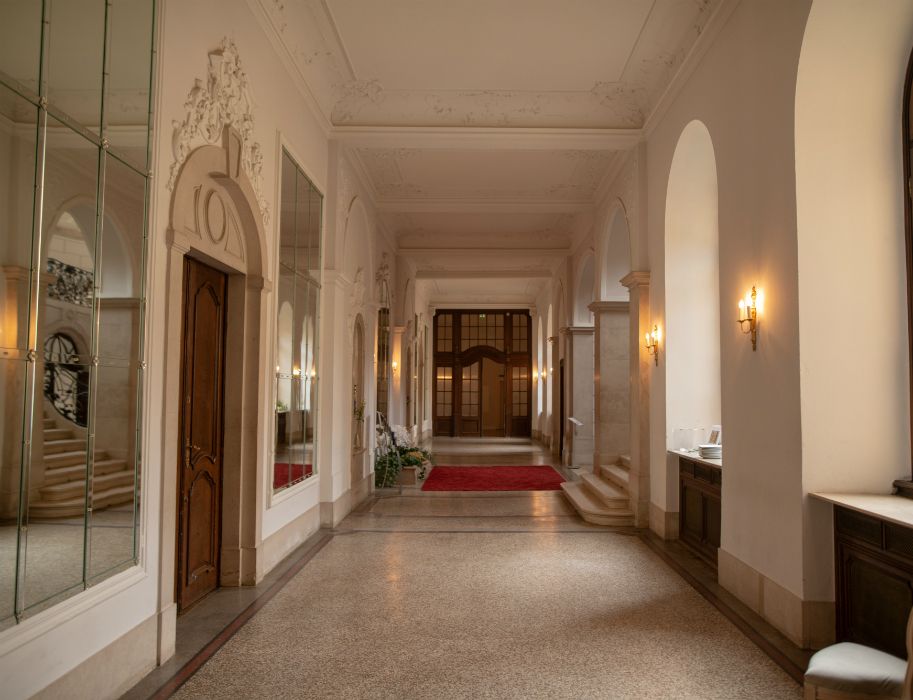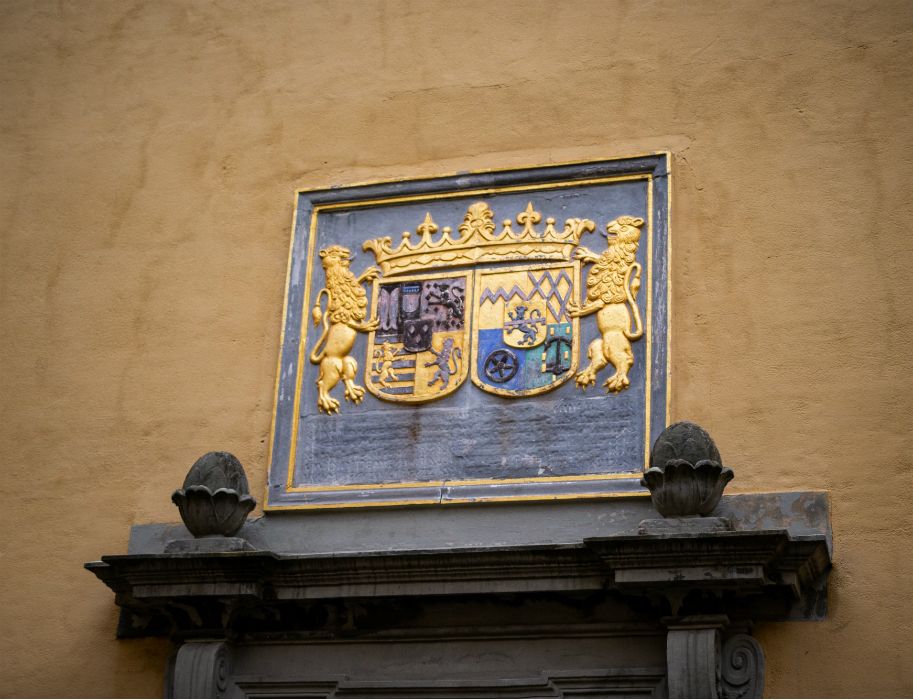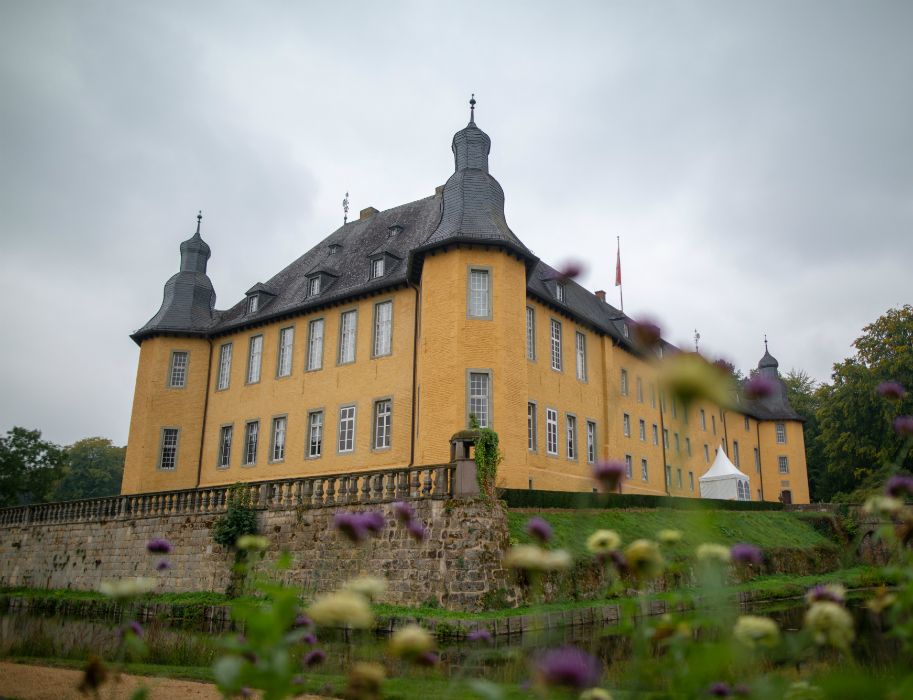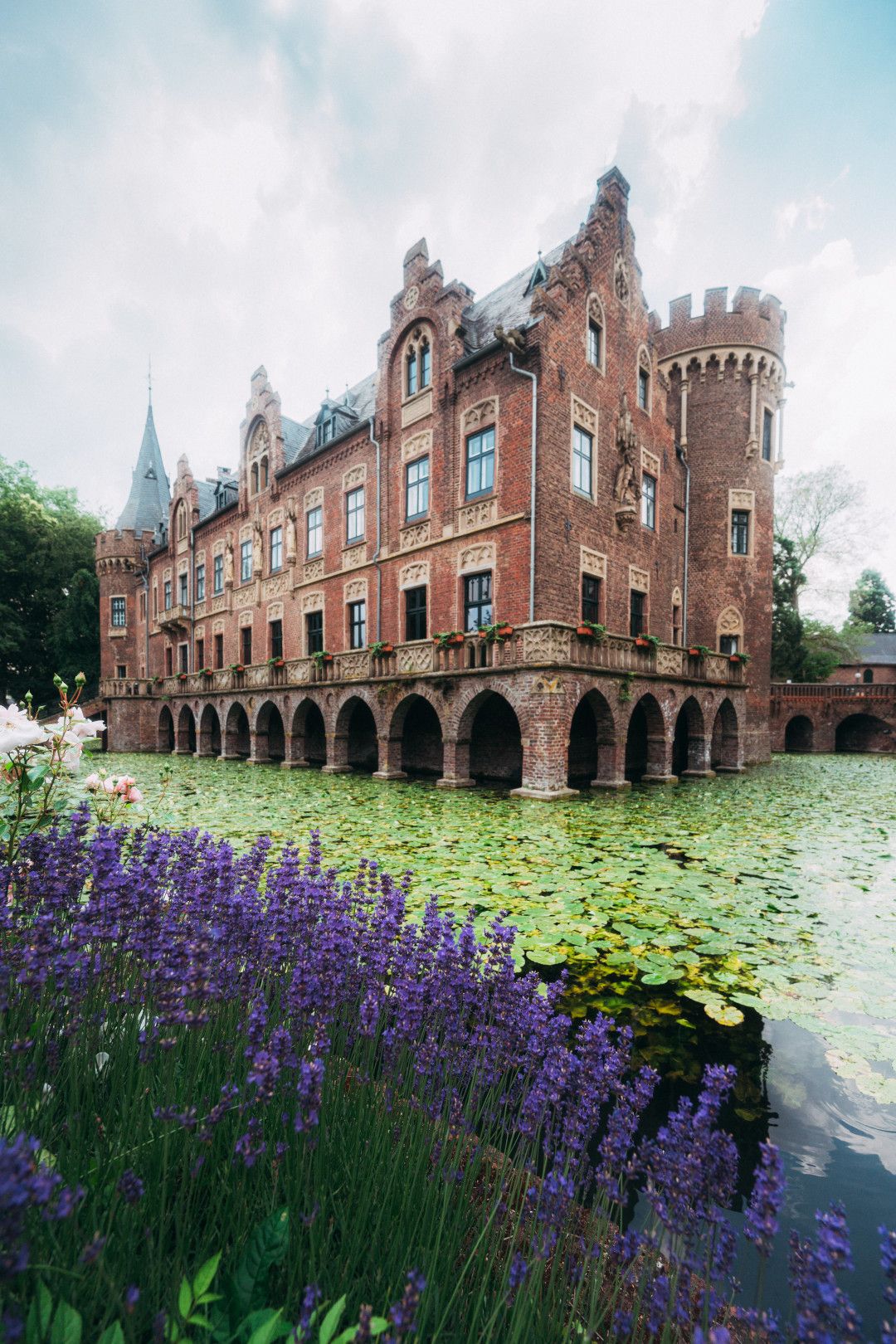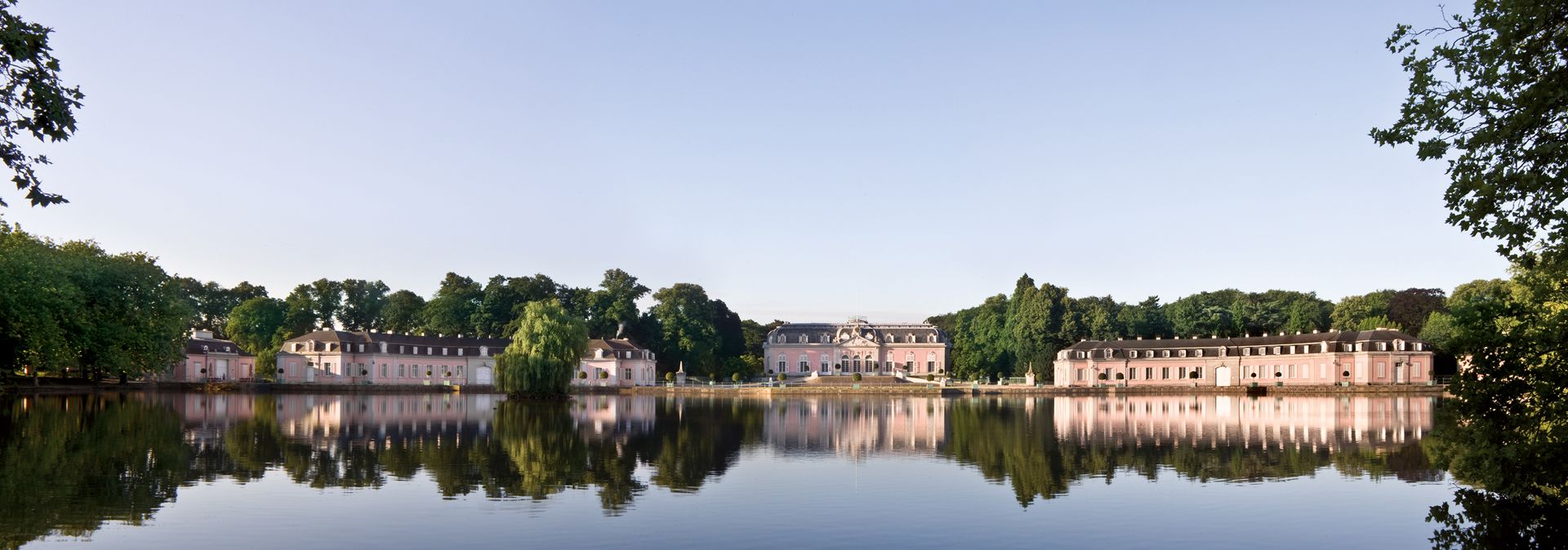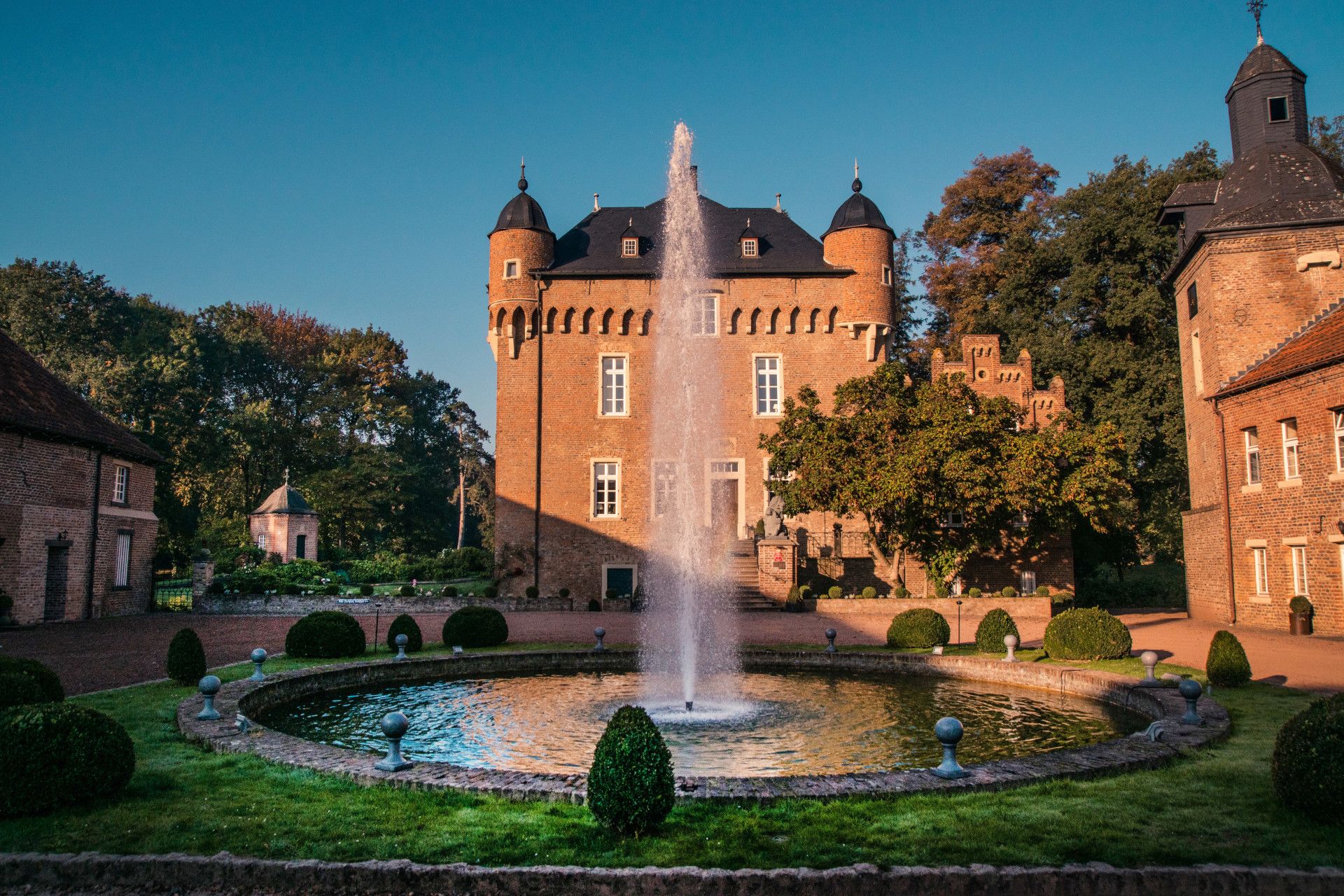With its outer castles and the farmyard, Schloss Dyck extends over four islands in the Kelzenberg stream and is surrounded by a picturesque English landscape garden. Its history has been documented since 1094, when "Hermannus de Dicco" is mentioned in a document of the Archbishop of Cologne. He was the lord of a simple fortification in the marshy creek area. The following generations developed the seat into a fortified moated castle, and the surrounding villages were incorporated into the manorial district.
Two aspects are noteworthy from a historical perspective: firstly, the estate remained in the possession of the Salm-Reifferscheidt-Dyck family for over 900 years before it became a center for garden art and landscape culture with the establishment of a foundation in 1999. On the other hand, it was able to maintain its autonomy between the power centers of Electoral Cologne, Jülich and Geldern for several centuries. The small territory - popularly known as "Dycker Ländchen" - is still recognizable today as a unique piece of cultural landscape.
Chivalry and the Middle Ages with their many military conflicts were a thing of the past when the castle took on its present appearance. The owners of the 17th century create a representative, early baroque residence. A new barn was built in 1647, and six years later the riding stables, guardroom and brewery were renovated. From 1656 to 1667, Count Salentin had the court palace extended into a four-winged complex. It became a meeting place for the high society of the day.
At the end of the 18th century, Dyck became a rococo residence of the highest order. The finest wallpaper and exquisite furniture are part of the interior. Some of the rooms in the east wing are now open to the public as a museum. A look into the past - and into the future: with the establishment of the foundation, a comprehensive renovation of the entire complex and a contemporary reorientation of its content has begun.
